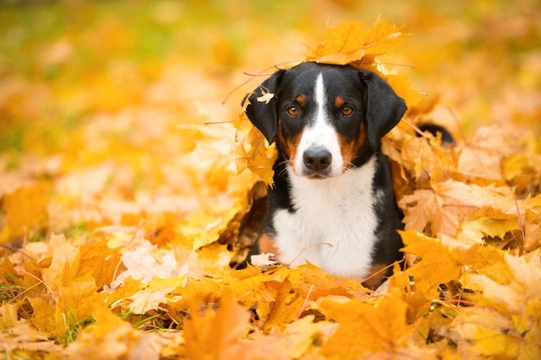
Seasonal hazards in autumn that dog owners should watch out for
For many people, autumn is the best time of year to be a dog owner! It is not too hot and not too cold, and whilst winter is just around the corner, the weather is often not far from perfect for dog walking and outdoor pursuits, all decorated with the backdrop of falling leaves and the scent of bonfires!
Just like any other time of the year, autumn comes with a few season-specific risks for dogs, but learning a little bit about things to watch out for at this time of year can help you to ensure that your dog stays safe, and that you can enjoy the great outdoors with your dog nonetheless.
Read on to learn more about some of the seasonal hazards that autumn presents for dogs and their owners.
Conkers
Conkers are the seeds of the horse chestnut tree, and of course, playing conkers used to be a very popular children’s game! When conkers fall from the tree, they are encased in a spiky green shell, which splits off to reveal the dark, shiny brown conkers themselves, which can often be found around the roots of trees in large quantities.
Whilst conkers are unlikely to prove appealing to your dog to eat, some dogs that like to carry toys around and particularly retrievers like the Labrador or Golden retriever will be keen to get a mouthful of conkers to play with!
However, if your dog eats conkers, this can lead to sickness and diarrhoea, and if ingested in large quantities, can prove toxic. Added to this, the fact that conkers are round and hard means that they can also potentially become lodged in the intestine and cause a blockage, so make sure that your dog doesn’t eat them!
Fermenting fruit
During the autumn, apple trees, plum trees and sloe bushes will drop their unpicked fruit, which over time will ferment on the ground into a natural alcoholic compound. If your dog eats such dropped fruit, they are likely to again suffer from sickness and diarrhoea, and also, may run the risk of having a toxic reaction to the natural alcohol produced by the fruit as part of its fermentation process.
Leaf mould
Leaf mould is the mulchy compost-like substance that large quantities of fallen leaves turn into as they rot, and this can be a valuable addition to the soil of your garden to help to provide nutrients for your spring plants!
Many dogs love to play in and around fallen leaves, often proving very entertaining as they zoom around and jump through piles of leaves, but take care to clean your dog off properly before they go back inside, as leaf mould contains bacteria and fungus that your dog can ingest, leading to stomach upsets.
Bonfire night
Bonfire night and Halloween are of course autumnal events, and while these nights are often great fun for people and dogs alike, take a little extra care with your dog at this time of the year. Make sure that they don’t get into the Halloween chocolate and make themselves ill, and also, take steps to keep your dog calm and safe on bonfire night and during the week that it falls in, as fireworks often upset and unsettle dogs.
Antifreeze
If you drive, the onset of autumn will usually mean that you’ll spend some time getting your car prepared for winter, maybe changing over to winter tyres and topping up the antifreeze in your engine and windscreen wiper water to prevent it from freezing.
Remember that antifreeze is extremely toxic to dogs, and if ingested, will quickly lead to rapid onset poisoning that can often prove fatal. Antifreeze smells and tastes sweet as well, which is why dogs can be apt to try it, so keep it well out of the reach of your dog, and clean up any drips or spills straight away.
Harvest mites
Finally, harvest mites are tiny red mites that appear at the end of summer and the start of autumn in long grass and in forests, and which can easily be picked up by your dog when out walking.
Once the mites migrate onto your dog’s coat, they latch on to the skin and soon prove very irritating, ultimately leading to your dog scratching themselves to distraction to try to relieve the associated itching. Harvest mites and the associated itchiness that they cause can soon lead to your dog scratching themselves raw, leading to lesions appearing on the skin that are at risk of infection.
Check your dog over after every walk, and wash any mites off them promptly. The areas of the body that are most likely to be affected by harvest mites are the bare or more sparsely furred areas of the body, such as around the eyes, ears and nose, between the toes, and on the undercarriage.



